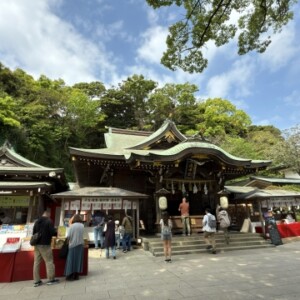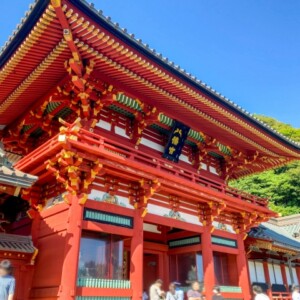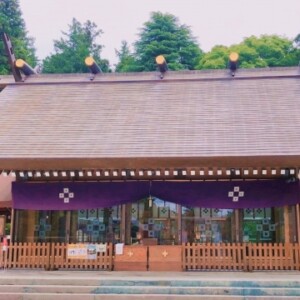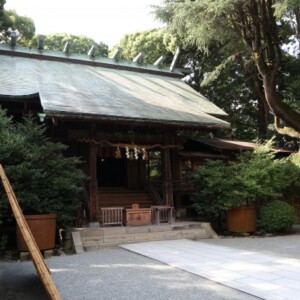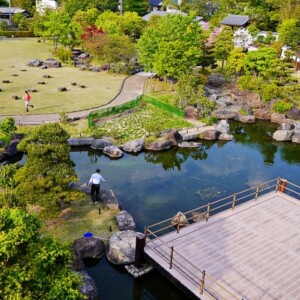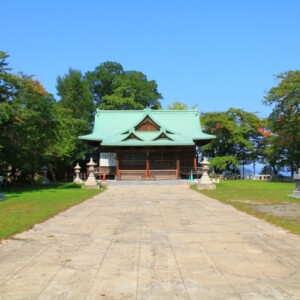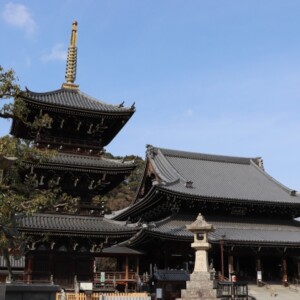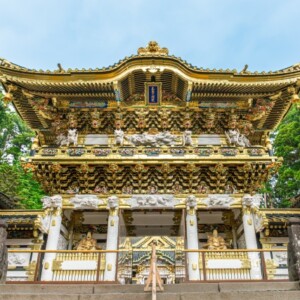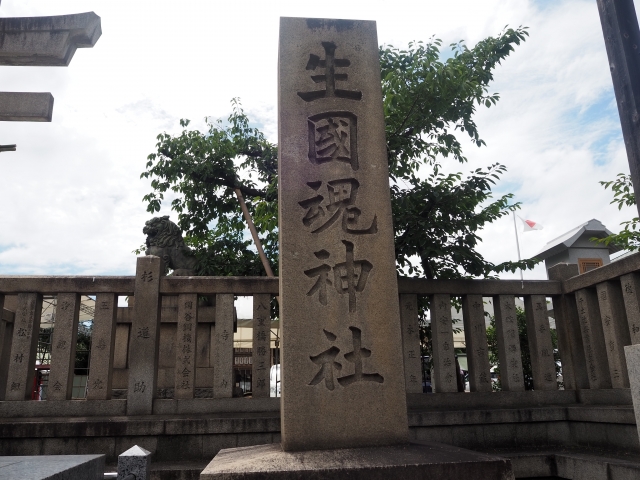
Ikukunitama Shrine|Complete guide to the history, attractions, and worship information of Osaka’s oldest shrine with a long history
Ikukunitama Shrine, located in Tennoji Ward, Osaka City, is the oldest shrine in Osaka, boasting a long history of approximately 2,700 years, and continues to be beloved by many visitors. Known affectionately as “Ikutamasan” by the locals and by its other name, Namba Taisha, the shrine is a venerable sanctuary that dates back to the reign of Emperor Jinmu. The shrine has a wealth of attractions such as its unique architectural style, Ikukunitamizukuri, the only one of its kind in Japan, and its spacious precincts dotted with as many as 11 auxiliary shrines, making it a valuable spot for visitors to experience Osaka’s history and culture.
Outline and basic information about Ikukunitama Shrine
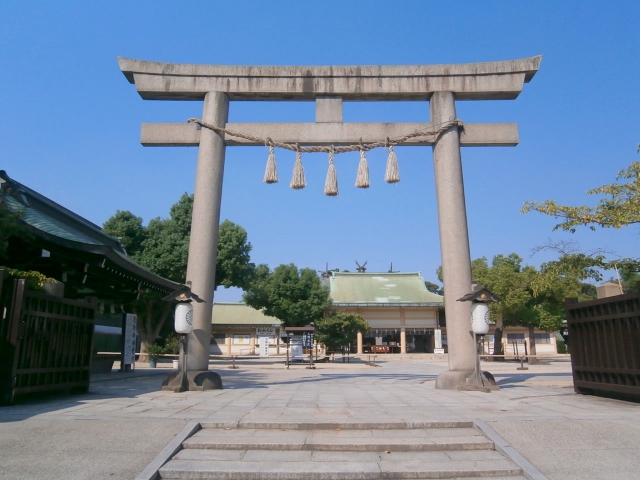
Ikukunitama Shrine is located in Ikutama-cho, Tennoji-ku, Osaka City, Osaka Prefecture, and is a highly prestigious shrine, listed as Meishin-taisha in the Engi-shiki (Engi-style of Shinto law), and formerly ranked as a kanpeitai-sha. Currently, the shrine is one of the most important shrines in the Kansai region as an attached shrine of the Jinja Honcho (Shinto Shrines Agency).
History and Origin
Ikukunitama Shrine was founded about 2,700 years ago, when the first Emperor Jinmu arrived in Naniwazu from Kyushu and enshrined Ikushima and Ashijima no Mikami near the present Osaka Castle. Since this time, the area including the present Osaka Castle has long served as the shrine’s sacred area.
The history of the shrine is recorded in numerous authentic histories. In the Chronicles of Japan, the shrine is mentioned as “Ikukunitama Shrine” in the article of the 36th Emperor Kotoku, and in the Engishiki, as “Namba Taisha Shrine and Wreck Taisha Shrine. The shrine had a deep connection with court rituals, as its deities were enshrined as the main deities during the Yajushima Festival that accompanied the accession of emperors during the Heian and Kamakura periods.
In 1585, the shrine was relocated to its current location when Toyotomi Hideyoshi built Osaka Castle. The main shrine was built two years after the relocation and has maintained its grandeur to this day.
Deities and Benefits
The deities enshrined at Ikukunitama Shrine are Ikushima no Okami and Tarushima no Okami, with the deity Omononushi no Okami later enshrined as a consort deity.
Ikushima-ohkami and Ashishima-ohkami are the guardian deities of the land and earth, and are revered as the gods of life and fertility. These deities symbolize “Iki-” and “Tari,” the source of life, and are revered as gods who wish for people’s happiness, health, and prosperity.
The main benefits of this shrine include national security, safety of the family, prosperity in business, matchmaking, marital bliss, safe childbirth, health and longevity, etc. In particular, it is believed to be highly beneficial for matchmaking, marriage breakup, maturing of a good marriage, and protection of women.
Highlights of Ikukunitama Shrine
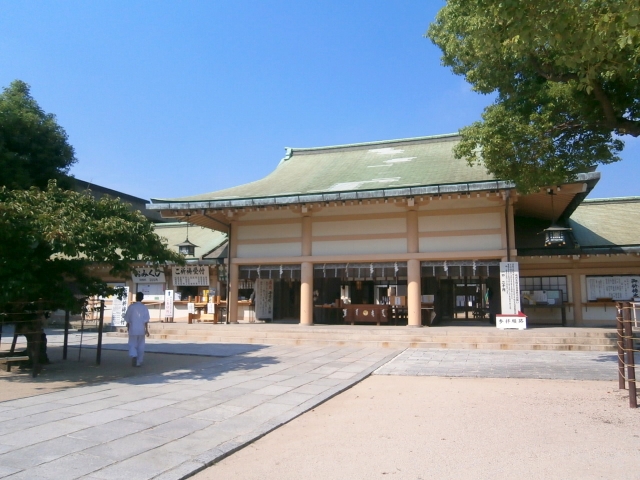
Ikukunitama Shrine is a quiet sanctuary in the city of Osaka, and has many attractions. From the historic architecture to the abundance of auxiliary shrines, there are many elements that attract visitors to the shrine.
Architectural and Structural Attractions
The main hall was built two years after the relocation, using the Ikukunitama-zukuri style, which is unprecedented in the history of shrine architecture, with the main hall and mihiden roofed in a single nagare-zukuri style, and three gables (chidori-gafu, sukarikara-gafu, and chidori-gafu) installed in front of the building. This architectural style is unique to Ikukunitama-zukuri Shrine, and is similar to that of the tenshukaku (castle tower), which conveys the grandeur of the Momoyama Period.
Although the present main hall was rebuilt after World War II and is a concrete structure with a copper shingle roof, it faithfully reproduces the remains of the Momoyama Period, and its majestic appearance is overwhelming to many visitors.
The Beauty of the Precincts of the Shrine and its Provident Shrines
The gardens within the shrine are well-maintained and beautifully decorated with seasonal flowers and trees. The grounds of the shrine are home to a variety of smaller shrines, and the grounds are spacious with much to see and do, and a promenade-like environment makes it easy to walk around.
One of the most notable shrines is Shigino Shrine, which is famous as a shrine for breaking off bad relationships. It is believed to be excellent for cutting off bad marriages and bringing good marriages, and is believed to be beneficial for love, family relationships, and personal relationships.
Other shrines, such as Tenmangu Shrine, Sumiyoshi Shrine, and Inari Shrine, are scattered throughout the area, each with different benefits, and they possess comprehensive spiritual power to grant various wishes.
Cultural Properties and Important Collections
A monument to Hikohachi Yonezawa, known as the founder of Kamigata rakugo (Kansai rakugo), is located in the precincts of the shrine. Kamigata rakugo was started in Kyoto by Goro Gorobei, and is said to have been popularized by Hikohachi Yonezawa in Osaka, where it was performed on the grounds of Ikukunitama Shrine.
A statue of Ihara Saikaku, author of such ukiyo-zoshi works as “Koshoku ichidai onna” and “Seken munezakuyo,” stands at the Nanbo site of the shrine to commemorate his achievements. Saikaku was also famous as a haiku poet, and there is an anecdote that he composed 4,000 poems in a single day and night in the precincts of Ikukunitama Shrine.
These cultural legacies tell us that Ikukunitama Shrine is more than just a religious site, but has played an important role as a center of Osaka’s culture and performing arts.
Guide to Prayer and Worship
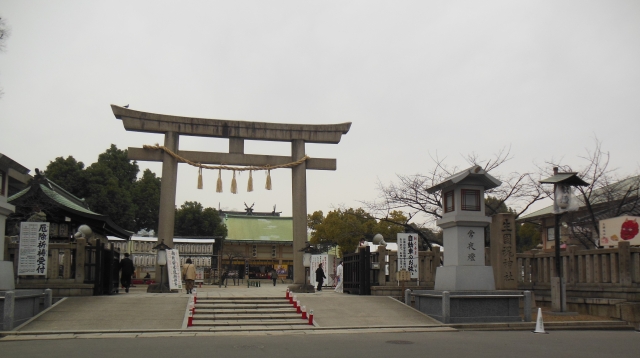
Ikukunitama Shrine is an open shrine that welcomes many visitors throughout the year. By following the proper etiquette, you will be able to receive deeper blessings from the shrine.
Worship Etiquette and Manners
The etiquette for worshipping at Ikukunitama Shrine is the same as that used at most Shinto shrines. When passing through the torii gate, bow and walk on either side of the path, as the center of the path is considered to be the path of the deities.
After purifying your body and mind at the hand-watering booth, go to the main shrine and worship in the manner of “ni-ai ni clap-toe ippai” (two bowings, two clapping hands, one bowing). First, bow deeply twice, then clap your hands together in front of your chest twice, and finally bow deeply once to complete your worship.
The hours of worship are from early in the morning to late in the evening, and especially early in the morning, when the air is quiet and refreshing, is the best time to calm your mind and pray.
Annual and Seasonal Events
The “purification ceremony” to ward off bad luck and illness is held on June 30, the “Ikutama Summer Festival” on July 11 and 12, the “Osaka Takigi Noh Play” on August 11 and 12, and the “Hikohachi Festival” on the first Sunday of September and the day before, named after Hikohachi Yonezawa, the founder of Kamigata Rakugo, attracting many visitors to the shrine.
Of particular note is the Ikutama Matsuri, the top of the three major summer festivals in Osaka, in which a procession of worshippers makes their way to Osaka Castle, the original sacred site of the festival. This traditional festival has been held since the Heian period (794-1185). The festival was suspended for 70 years due to the war, but was restored in 2014, and is now a spectacular festival with lion dances and portable shrine processions.
During the festival, the shrine is lit up at night to provide a fantastic atmosphere for worship, and the numerous stalls attract locals and tourists alike, creating a great deal of excitement.
Red Seal and Good Luck Charm Information
Many visitors receive red seals at Ikukunitama Shrine as a souvenir of their visit. Please check with the shrine office when you visit the shrine for detailed information on the hours of conferment and fees.
The shrine is also famous for its “cliff-edge fortune-telling” service, which is available only on weekends and holidays. When the results of the appraisal are not satisfactory, visitors are told to visit Shigino Shrine, write their heart’s desire on an ema (votive tablet), and dedicate it to the shrine to open up their luck.
A variety of good luck charms and lucky charms are also available, and you can receive a good luck charm for various wishes such as marriage, family safety, and business prosperity.
Access and usage information
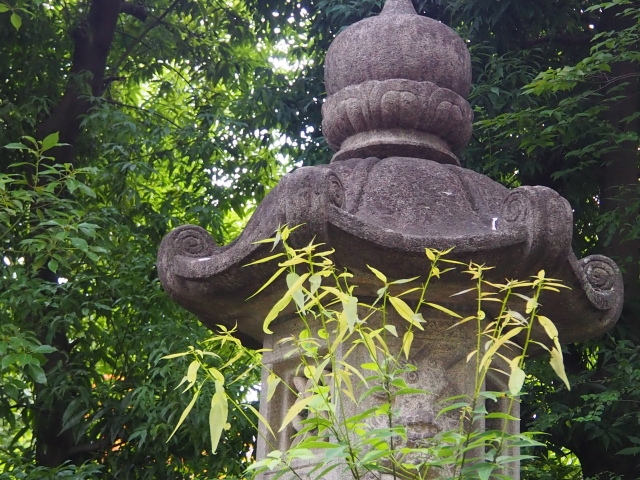
Ikukunitama Shrine is conveniently located in Osaka City and is accessible by multiple modes of transportation. It is a very convenient location for those who visit the shrine for sightseeing or to pay their respects.
Transportation Access
Access by train is most convenient. It is approximately a 4-minute walk from Tanimachi 9-chome Station on the Subway Tanimachi Line and Sennichimae Line, and approximately a 9-minute walk from Osaka Uehonmachi Station on the Kintetsu Line.
Other train accesses include about a 7-minute walk from Nippombashi Station on the Osaka Metro Sakaisuji Line and Sennichimae Line, about a 7-minute walk from Kintetsu Nihonbashi Station on the Kinki Nippon Railway (Kintetsu) Line, and about a 10-minute walk from Osaka Uehonmachi Station on the Kintetsu Railway (Kinki Nippon Railway) Line.
It is a 20-minute walk from JR Tennoji, Namba, and Tsuruhashi stations, and you can also visit the temple within walking distance from Namba.
For access by car, it is approximately 5 minutes from the Yuhigaoka ramp on the Hanshin Expressway.
<Address> 13-9 Ikutama-cho, Tennoji-ku, Osaka-shi, Osaka 543-0071
Hours of Admission, Fees, and Parking
The temple is open from 9:00 to 17:00 (depending on the season) and is open all year round. There is no admission fee, and everyone is welcome to visit.
Parking space for 20 cars is available (free of charge), and visitors can also drive to the shrine. However, public transportation is recommended during festivals and holidays, when crowds are expected.
The shrine grounds are maintained as a promenade, making it easy to walk around, and wheelchair access is possible, but we recommend that you contact the shrine in advance for details.
There is no special dress code for visiting the shrine, but please keep in mind that it is a sacred place, and dress modestly.
Reference sites
Namba Taisha Ikukunitama Shrine official website: https://www.ikutamajinja.jp/



